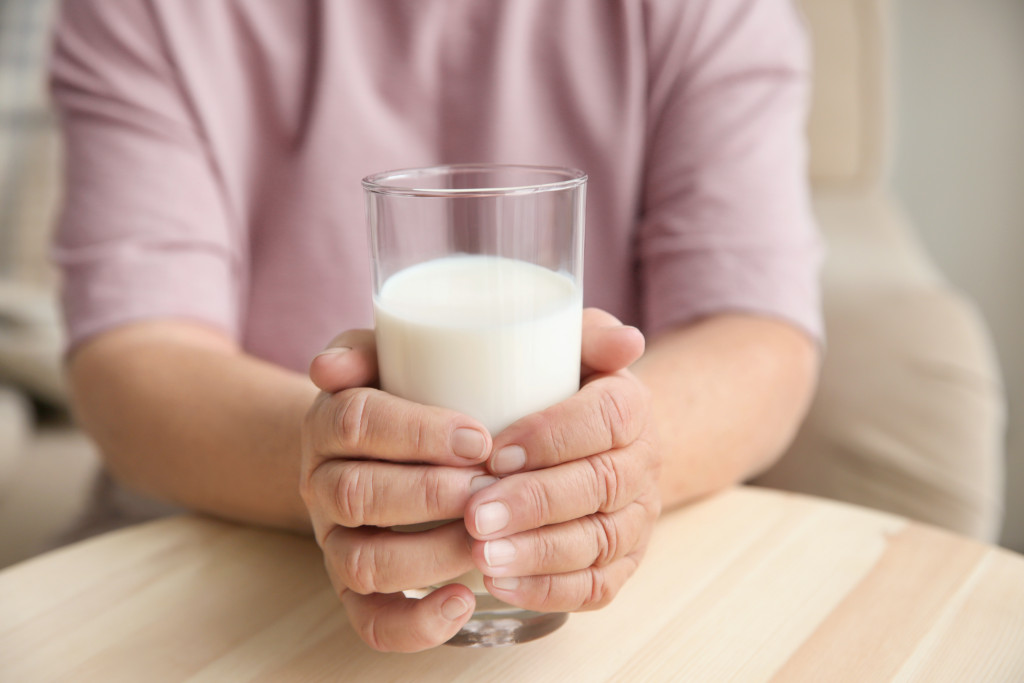As babies, we could digest milk, but when we became adults, we became lactose intolerant. It’s simple: we as babies had what we no longer have now since that was what we needed at that stage in life. Babies born in full-term produce enzymes that can digest lactose, while most adults are no more able to produce enough of such enzyme. The world has more lactose-intolerant adults than tolerant ones, making a sum of 65% of the world’s population.
But as we grow, does our lack of lactase enzyme mean we don’t need any more dairy? Not necessarily. What we now need are the vitamins, minerals, and essential nutrients found in dairy products. Milk or dairy products are crucial sources of essential nutrients such as vitamin A and B12, calcium, magnesium, zinc, phosphorous, riboflavin, and potassium. In fact, milk products are good sources of high-quality proteins, but which can be found in other types of food.
For those able to process lactose into their body, consuming milk products means reaping various positive effects. Research has shown that consuming dairy helps improve cardiovascular health and prevent colorectal cancer, osteoporosis, type 2 diabetes, and blood pressure. But for the lactose intolerant, you can still find ways around this. Your gut may not always hate all kinds of dairy, although the best you can do is keep a lactose-free diet.
Lactose Intolerant vs. Dairy Allergy
But first, make sure you know the difference between lactose intolerance and dairy allergy since people sometimes mistake one for the other. With lactose intolerance, you have to limit your dairy intake. But with a milk allergy, you have to avoid dairy products altogether.
With lactose intolerance, you will only feel gas and bloating, stomach pain, diarrhea, and nausea after up to 2 hours, while with milk allergy, you feel the same but with trouble breathing, skin rashes, and swelling of the throat and lips. Milk allergy is common among children, but it can develop in adults as well.
Why Are You Going Lactose-Free? Here Are the Dairy Foods to Avoid

Are you lactose intolerant, allergic to milk products, or simply a vegan? If your reason for going lactose-free is from any of the three (or whatever reason you have), then avoid altogether cheeses, even the soft, cream, and cottage, and milk of all types—from cow, buffalo, or goat. Butter also contains small amounts of dairy, so you might want to add it to your list of avoided foods. Also, avoid yogurt, buttermilk, whipped cream, sour cream, ice cream, and ice cream-like products such as dairy-based sherbet and frozen yogurt.
Check any other products’ labels for added dairy, such as convenience meals, breakfast cereals, baked goods and desserts, instant coffee, salad dressings, creamed vegetables, instant potato mixes, cake mixes, and even processed meats.
Certain ingredients in a label mean a product contains lactose, which you might want to avoid for your lactose-free diet. These include cheese, whey, whey protein concentrate, curds, cream, sour cream, and other products with milk names (e.g., condensed milk, milk casein, powdered milk, etc.).
Some ingredients sound similar to lactose, such as lactalbumin, lactate, and lactic acid, but take note that all these are not related to lactose.
Lactose Substitutes You Can Still Enjoy
Even if you are allergic to dairy or lactose intolerant, you can still indulge in the likeness of dairy products in terms of taste and nutrition. Make sure to take enough calcium even if you don’t consume milk products. Here are some substitutes:
Vegan cake
Fighting against animal cruelty and exploitation, vegans intentionally avoid dairy and many other animal-derived products. But this advocacy doesn’t mean they can’t indulge in cakes and many other kinds of desserts. Vegans are already reaping plenty of vitamins and minerals from the fruits and vegetables they eat, so if you are one, it doesn’t hurt to indulge your palates now and then. Fortunately, vegan and gluten-free cakes are just a European cafe order online away.
Soy milk
This may be best for the lactose intolerant, not those that are allergic to milk. Both men and women are encouraged to take 1,000 mg of calcium per day, which they can take from milk in three glasses. With lactose intolerance, you may need two servings of soy milk to achieve that daily calcium requirement. For those with milk allergies, avoid using soy milk as a substitute.
Leafy green vegetables
What else is the best source of calcium but green leafy vegetables? If your lactose intolerance is worse, opt for vegetables instead.
Now that you’re grown-up and likely lactose intolerant, make sure you consume other types of foods to compensate for the milk-related nutrients you would’ve got just by drinking milk. It’s fun to explore other kinds of milk, such as almond, coconut, cashew, hemp milk, etc.

